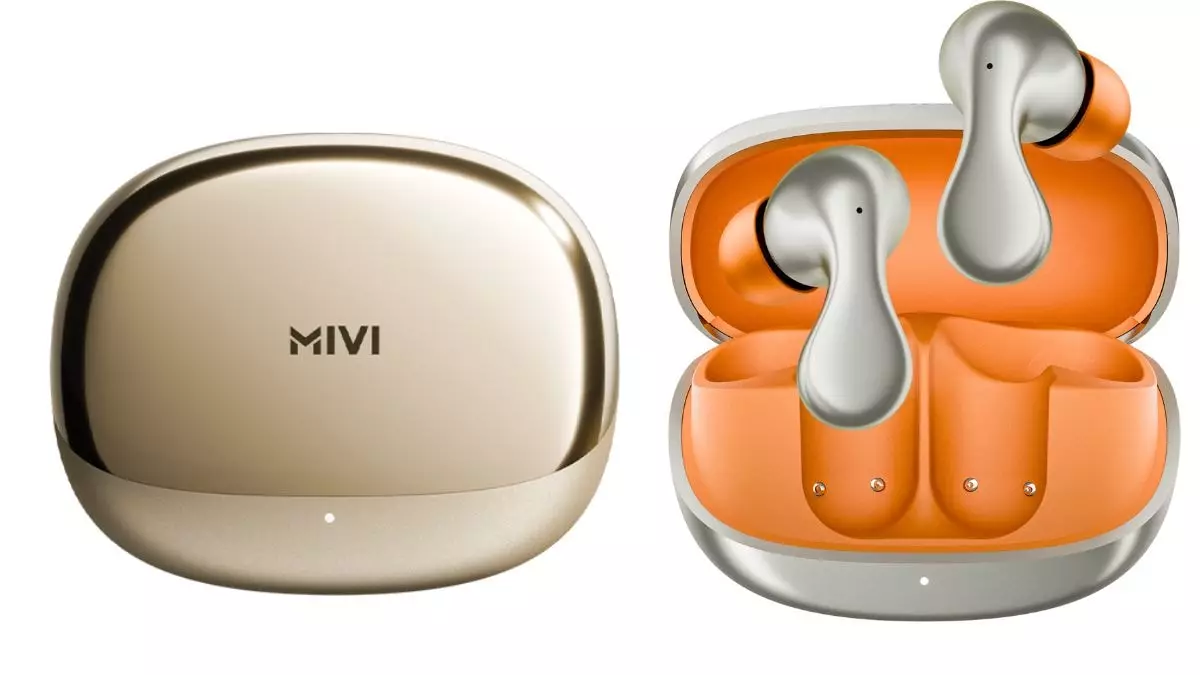The launch of Mivi AI Buds in India exemplifies how modern tech companies often prioritize flashy features over genuine utility. With promises of a “context-aware” AI assistant that can be summoned through voice commands, the narrative seems enticing: a seamless merge of earbuds and intelligent assistant technology. Yet, beneath the glossy surface of the product’s marketing lies a more complicated reality, where promises may not match the actual experience. It’s tempting to get drawn into the allure of 40 hours of playback, active noise cancellation, and an AI assistant that assists with daily tasks. But are these features meaningful enhancements, or carefully crafted illusions meant to justify higher price tags and brand positioning?
It’s essential to scrutinize whether the AI capabilities are genuinely innovative or merely repackaged concepts from older tech. The idea of a voice-activated assistant that communicates via “wake phrases” like “Hi Mivi” may sound futuristic, but it raises questions about privacy, responsiveness, and actual usability. Does the AI truly understand context, or is it simply a clever pre-programmed chatbot with superficial domain expertise? The integration with a companion app, while necessary, adds complexity that may alienate users seeking straightforward functionality.
The Price Dilemma: Value or Vanity?
Arguably the most critical aspect of the Mivi AI Buds is their pricing strategy. Listed at Rs. 6,999 but currently available at Rs. 5,999, the earbuds position themselves as mid-range premium devices. However, examining their specs suggests that they are competing in a crowded space filled with established giants offering more reliable performance at comparable or even lower costs. Features like a 13mm driver and Bluetooth 5.4 support are standard in many affordable TWS earbuds, making the incremental value questionable.
Furthermore, the real question remains—does the inclusion of a voice-based AI assistant justify the price premium? The AI features, while promoted heavily, appear to be more of a marketing gimmick rather than a genuinely transformative tech solution. For a center-leaning liberal audience, who tend to value transparency and authenticity in technology, this raises concerns. Are users being sold a product based on the attractiveness of its features rather than actual utility? The “free” AI service, which may turn into a freemium model, seems to prioritize monetization over building trust through honest value propositions.
Design and Durability: A Style Over Substance
The aesthetics of the Mivi AI Buds—an unibody metallic body with a glossy finish and hourglass-inspired stems—are undeniably appealing, especially to style-conscious consumers. The high-end look may impress at first glance, but durability and comfort are more telling indicators of quality. The IPX4 water resistance rating, while useful, does little to address the real-world wear and tear these earbuds will face. After all, technology that looks good on paper doesn’t necessarily stand the test of time or vigorous usage.
It’s also important to recognize that design choices often prioritize visual appeal over ergonomic comfort. Given the competitive landscape, prominent brands have invested heavily to ensure their earbuds are comfortable during prolonged usage—a factor that should not be overlooked. The weight of 52 grams, inclusive of the case, is reasonable, but whether the earbuds will remain snug and comfortable during active use or long listening sessions remains uncertain.
The Sound, the Quiet, and the Reality Check
While Mivi claims monumental technology—3D soundstage, spatial audio, and active noise cancellation—the lack of detailed specifications and independent reviews casts doubt on these features’ effectiveness. True noise cancellation isn’t just marketing fluff; it’s a complex feature requiring advanced hardware and software integration, which often falls flat in budget or mid-range earbuds. As such, consumers should approach these claims critically, especially when considering the earbuds’ sub-premium price point.
The 40-hour playtime promise, including the charging case, sounds impressive but may oversell real-world usage. Battery life often diminishes with time, and such lofty claims are often subject to testing conditions that don’t reflect the average consumer’s experience. Moreover, the reliance on proprietary app-based AI assumes users are willing to carry their phones around and connect constantly—a notion not inherently convenient or streamlined.
Is the AI Assistant an Innovation or Illusion?
Perhaps the most striking aspect of the Mivi AI Buds is their AI assistant. The premise of having five pre-loaded avatars—Chef, Guru, Interviewer, News Reporter, and Wellness Coach—creates a sense of interactivity and personalization that is alluring. But how effective are these avatars? Do they merely regurgitate canned responses, or do they genuinely offer useful, nuanced assistance? The answer largely hinges on user expectations and the marketing narrative.
Additionally, offering this “AI” as a free service initially, with plans to monetize later, raises ethical questions about transparency and consumer deception. Are consumers paying a premium for a partially developed feature destined for a paywall? From a center-liberal perspective, this approach embodies a problematic mixture of tech optimism and exploitative monetization, favoring profit over the real empowerment of users.
In essence, the Mivi AI Buds symbolize a broader trend in the affordable tech sphere: promises of advanced AI integration that often fall short of expectations. They appeal to consumers longing for innovation, but at what cost—trust, transparency, or genuine utility? Such questions should not be dismissed lightly, especially when technology is increasingly embedded into everyday life under the guise of progress.

Leave a Reply